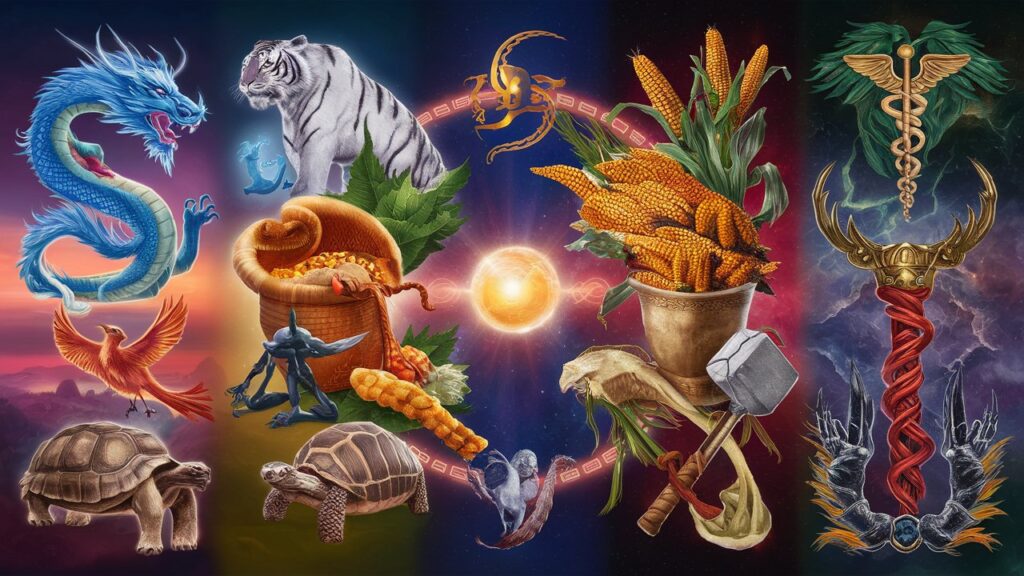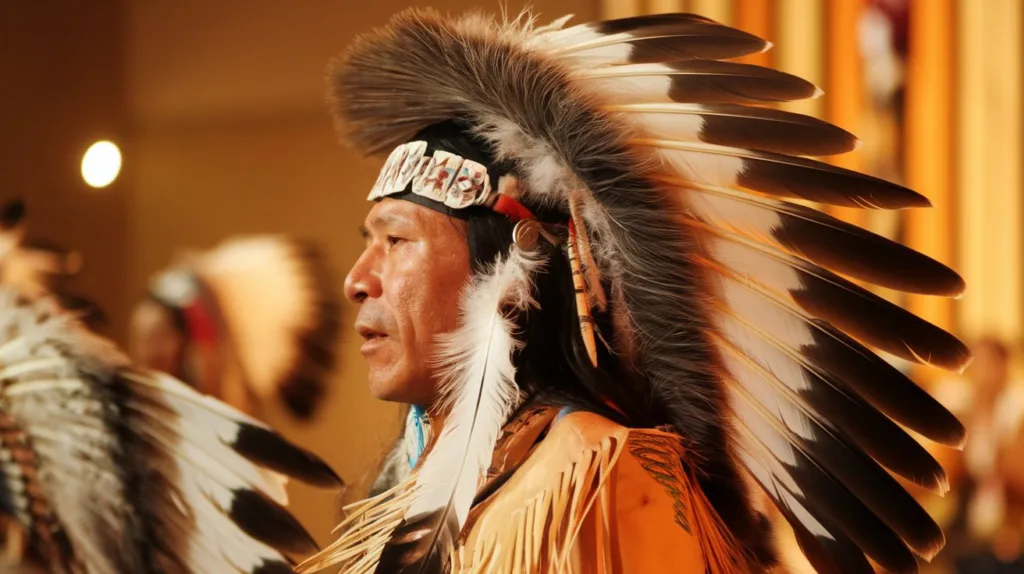Explore the captivating world of cultural symbols and discover their profound significance in shaping our identities and societies. Cultural symbols are more than just mere representations; they hold intrinsic meanings, reflecting a culture’s values, beliefs, and customs. These symbolic artifacts serve as a powerful language, communicating the essence of a culture’s heritage and offering insights into its unique perspectives.
Key Takeaways:
- Cultural symbols reflect the stereotype values of a culture and play a vital role in shaping identities.
- They include objects, signs, gestures, or words with symbolic meaning within a specific cultural context.
- Examples of cultural symbols range from the heart symbol representing love to the owl symbolizing wisdom.
- Cultural symbols reinforce cultural norms, evoke emotions, and create a sense of unity and pride.
- Understanding and respecting cultural symbols foster cross-cultural understanding and appreciation.
Examples of Cultural Symbols


Cultural symbols are powerful representations of a society’s beliefs, customs, and values. They serve as visual and conceptual embodiments of cultural heritage, carrying profound meanings within specific cultural contexts. Understanding these symbols provides us with insights into the rich tapestry of human experience, fostering cross-cultural understanding and appreciation. Here are a few examples of cultural symbols that hold deep significance:
The Heart Symbol
The heart symbol is universally recognized as a representation of love and affection. Across different cultures, it transcends language barriers and communicates the profound emotions associated with romance, compassion, and empathy. This simple yet meaningful symbol reminds us of the power of human connection and the importance of nurturing our relationships.
The Dove Symbol
The dove is a symbol of peace and tranquility. It has been used throughout history to represent the desire for harmony and the pursuit of non-violence. The image of a dove in flight is often associated with freedom and reconciliation, reminding us of the importance of peaceful coexistence and the resolution of conflicts through dialogue and understanding.
The Raven Symbol
The raven symbolizes different concepts across cultures. In some societies, it is seen as a messenger between the realms of the living and the dead, associated with death and doom. In others, it represents intelligence and foresight. The raven’s dark and mysterious nature captivates our imagination, reminding us of the complexities and dualities inherent in the human experience.
The Tree Symbol
Trees have profound symbolism across various cultures, representing growth, resilience, and connection to nature. The image of a tree with its roots firmly planted in the ground and its branches reaching for the sky serves as a reminder of our own journey through life. Trees symbolize strength, wisdom, and the interdependence of all living things.
The Owl Symbol
The owl has long been associated with wisdom and knowledge. Its ability to see in the dark and its serene presence have made it a symbol of introspection and intellect. Across different cultures, the owl is revered as a messenger of hidden truths and a guide through the mysteries of life. It reminds us to seek knowledge and pursue wisdom as we navigate the complexities of existence.
| Cultural Symbol | Meaning |
|---|---|
| Heart Symbol | Love and affection |
| Dove Symbol | Peace and tranquility |
| Raven Symbol | Death, doom, and intelligence |
| Tree Symbol | Growth, resilience, and connection to nature |
| Owl Symbol | Wisdom and knowledge |
These examples only scratch the surface of the vast world of cultural symbols. Each symbol carries its own unique significance and often holds different meanings within various cultural contexts. By appreciating and exploring these symbols, we can deepen our understanding of different cultures and broaden our perspectives on the richness of human expression.
Read More About Understanding Spiritual Symbols and Their Significance
The Power of Cultural Symbols


Cultural symbols have an extraordinary ability to shape our perceptions, attitudes, and behaviors. They serve as powerful representations of a society’s identity and values, anchoring individuals to their cultural roots. These symbols, whether they are objects, artifacts, or visual representations, have a profound impact on how we perceive and interpret the world around us.
One of the key functions of cultural symbols is their ability to foster a sense of shared identity and unity within a society. By embodying the beliefs, customs, and traditions of a culture, these symbols reinforce cultural norms and values, providing a sense of belonging and guiding individuals in their daily lives.
Furthermore, cultural symbols possess the remarkable power to evoke strong emotional responses. They can inspire feelings of pride, nostalgia, or even a sense of awe. Whether it’s a national flag representing a country’s heritage or an artistic representation of a cultural icon, these symbols have the capacity to create a deep emotional connection and forge a sense of community among individuals who share the same cultural background.
Additionally, cultural symbols play a vital role in preserving and celebrating a society’s cultural heritage. They act as gateways to the past, passing on important traditions, stories, and knowledge to future generations. These symbols are often intertwined with historical events and hold a significant place in the collective memory of a culture, reminding us of our roots and shaping our understanding of who we are as a society.
FAQ
What are cultural symbols?
Cultural symbols represent the most significant stereotype values of a particular culture. They can include objects, signs, gestures, or words that hold symbolic meaning within a specific cultural context.
What do cultural symbols represent?
Cultural symbols have inherent associations with philosophical traditions, thinking patterns, nationally shared values, national characters, historical and economic realities. They are powerful representations of cultural heritage and are used to communicate beliefs, customs, and values.
Can you give some examples of cultural symbols?
Some common examples of cultural symbols include the heart symbol, which represents love and affection, the dove symbol, which is associated with peace and tranquility, the raven symbol, often associated with death and doom, the tree symbol, representing growth and connection to nature, and the owl symbol, representing wisdom and knowledge.
Why are cultural symbols important?
Cultural symbols play a crucial role in shaping the identities of individuals and societies. They provide a sense of shared identity and unity within a society, reinforce cultural norms and values, and evoke strong emotional responses. They are also used in art, literature, and media to convey cultural messages and narratives.
How do cultural symbols contribute to cross-cultural understanding?
Understanding and respecting cultural symbols allows for greater cross-cultural understanding and appreciation. By recognizing the significance of these symbols, we can gain insights into the beliefs, values, and traditions of different cultures, fostering empathy and promoting cultural diversity.






